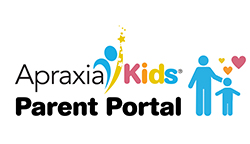Before beginning telepractice:
The state licensure laws need to be checked to determine if SLPS are allowed to conduct telepractice and if there are any specific rules that should be followed. For example, some states do not allow an initial visit by a therapist to be conducted through telepractice while other states do not specify anything about a first visit. ASHA has a website with links to each state’s licensure body for a family member or an SLP to consult: https://www.asha.org/uploadedFiles/State-Telepractice-Policy-COVID-Tracking.pdf
If your state allows telepractice by SLPs, then the next step is to see if a specific insurance company includes provisions for coverage of speech therapy delivered via telepractice. ASHA has another website with updated information on major insurance companies and if they reimburse for telepractice. Many companies are changing their policy during this time to allow reimbursement for telepractice. Check here to see if your insurance company has adjusted their policy: https://www.asha.org/uploadedFiles/COVID-19-Commercial-Insurance-Telepractice-Policy-Tracking.pdf
If you contact your insurance company and they do not cover telepractice, click here for a letter from Apraxia Kids that can be sent to the medical director of insurance companies asking them to consider changing their policy. The ASHA link above also has templates of letters asking for changes to policy that an SLP or a state’s speech-language and hearing association can send to insurance companies.
Tips for Families:
Telepractice therapy sessions need to be individualized to your child as far as the length and frequency and types of activities.
You may need to help facilitate the activities with your child if they are not able to independently engage with the therapist via technology.
Telepractice may not work for every child, so it may be a useful tool to check in with your therapist to get ideas of things you can do in your everyday routines to help facilitate improved communication skills.
Telepractice will look and feel different from regular in-person therapy but that is ok.
You and your therapist are on a huge learning curve for doing this, so be patient and willing to try.
Ask your therapist how you can help and what materials/toys would be appropriate.
If possible, have a quiet room free of distractions, but if not, sometimes siblings can be an asset to the session!
Below are some additional resources and there are many more on our COVID-19 Resource List:
Join Cari Ebert’s Facebook Page and look for posts aimed to help parents
Free speech therapy worksheet downloads
Watch people read stories online here or search YouTube for a particular book read aloud or favorite song played: “The Very Hungry Caterpillar read aloud”
Here are a few websites you could use on your own:
https://kera.pbslearningmedia.org/
https://kids.nationalgeographic.com/
